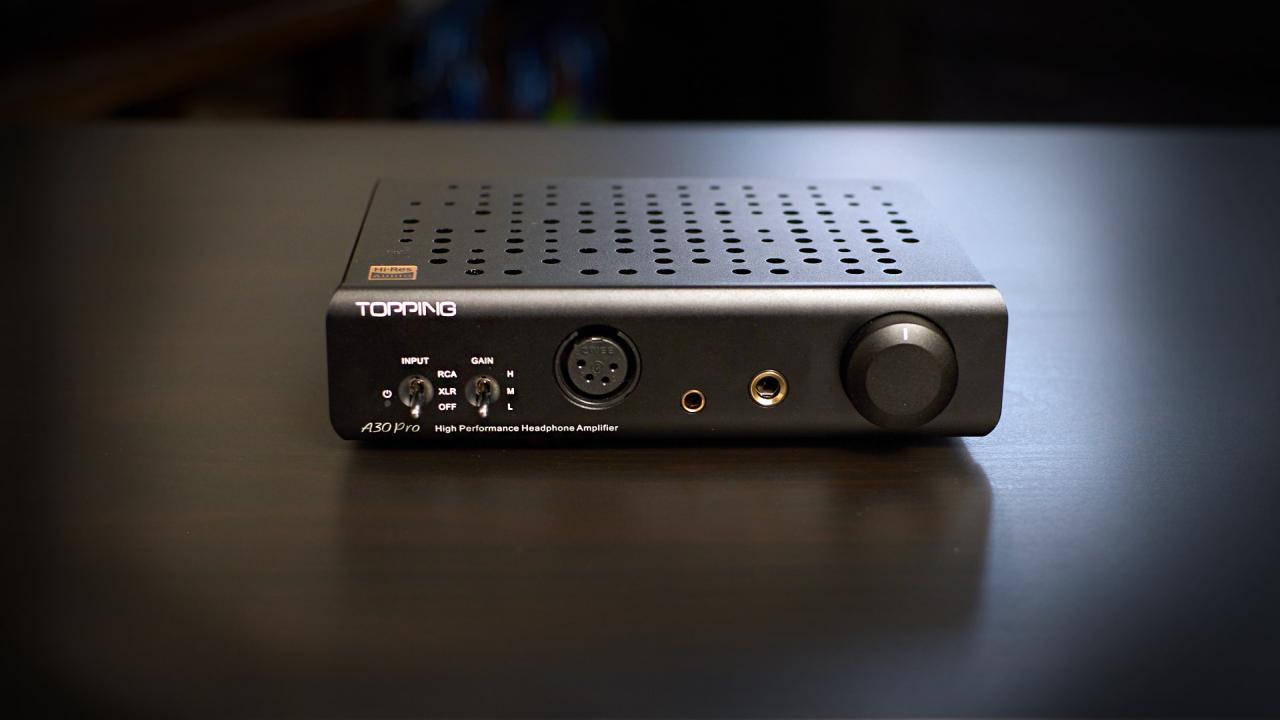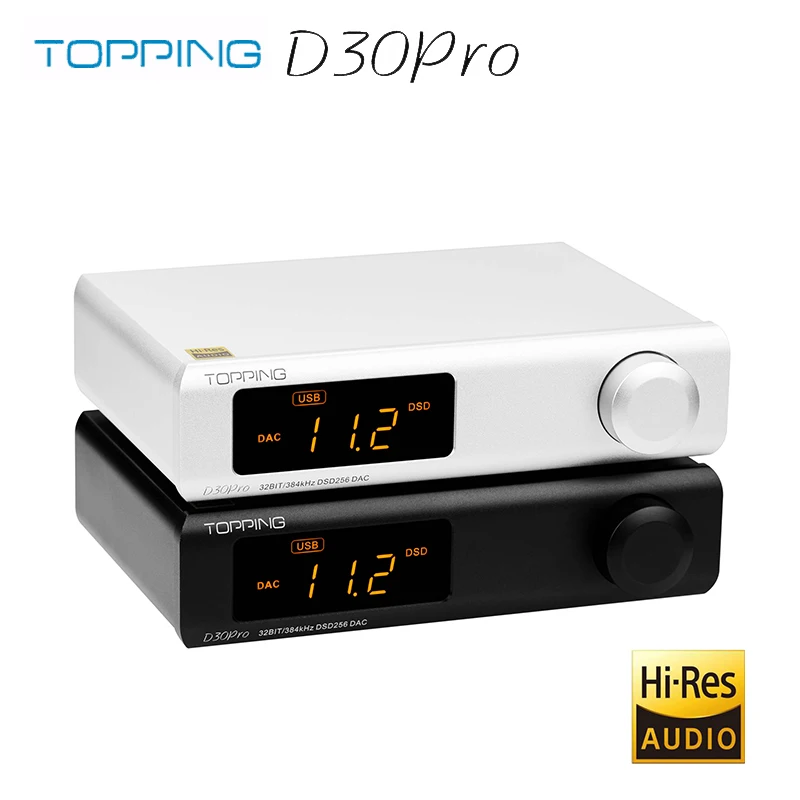Topping A30 pro is a powerful headphone amplifier that belongs to the same line as a recently reviewed D30 pro DAC. Knowing that it becomes clear that we’re talking about Topping’s midrange offering here. With that said, the A30 pro comes at a slightly cheaper price than its DAC companion at 349 USD. Now, with all that in mind, let’s see what a Topping mid-range head-amp can do these days.
Build and Connectivity
As with all Topping products, the A30 Pro is built like a tank. The whole body is made of thick aluminium with a sturdy feel to it. But unlike the flat and uninterrupted surface of D30 pro DAC, here we find many holes on both upper and lower plates, and some long cut-outs on the sides. These are necessary for cooling this powerful unit, but we’ll talk more about that in the next section.
When it comes to connectivity, there’s a lot of versatility with A30 pro. Starting with the back of the unit, we find both single-ended RCA inputs and balanced XLR ones. Moreover, there are single-ended RCA and balanced TRS pass-through outs so you can pass the signal to another device in the chain (an integrated amp or active speakers for example). This is always a nice and welcome feature. Aside from that, we see an IEC power inlet, meaning that the power supply is located inside the unit and there is no power brick sitting outside of the device, just a good old power cord that goes directly into 110 or 220 Volts depending on your region.
In the front, we find our headphone outs starting with an unbalanced 6.35 mm jack. Next to it, there is a balanced 4.4 mm Pentaconn, and finally, an XLR out that is also balanced of course. As you can see, there’s little if anything left out when it comes to possible ways of connecting A30 pro to other devices. Add a fantastic build to it and Topping passes this section with flying colors.
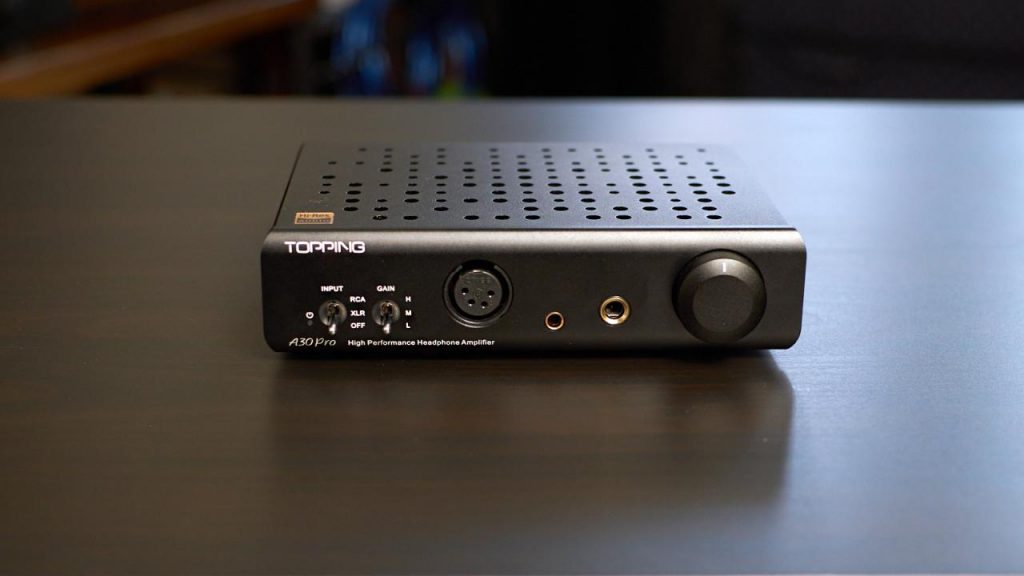
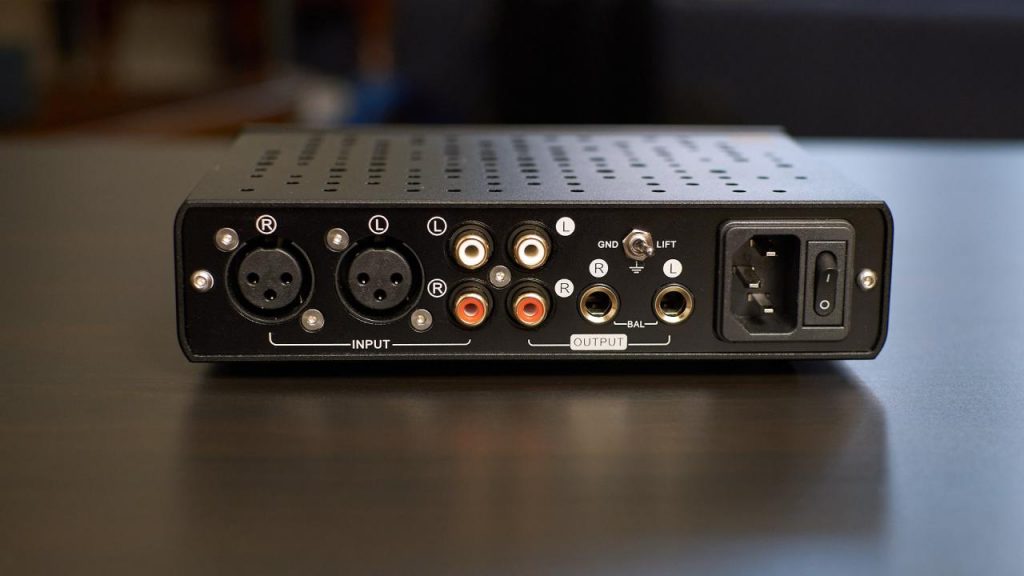
Features and Tech
We’ll start this section by sticking with the front panel. On the left side of the unit, you’ll find a selector that will turn the unit on and off, but it’ll also allow you to choose the input between RCA or XLR. Next to it, there is a gain selector that lets you choose one of three different gain levels: low, medium, or high. Low is basically an attenuated output that will be useful only for the most sensitive in-ears. By doing that, you’ll be allowed a finer gradation for volume control and minimize chances for any sort of background hiss to appear. For most desktop headphones, you’ll want to stick to either medium or high gain.
Inside the unit, Topping used their NFCA circuitry already known for its high power with low distortion. And with A30 pro, high power means 2 x 6 Watts into 16 Ohms, 2 x 5.5 Watts into 32 Ohms, and so on until we reach still a very high 840 mW into 300 Ohms. For those not that familiar with numbers, this is one of the highest power ratings in the head-amp market. Distortion and noise measurements are next to perfect as with most Topping products, but as usual, I’ll not be focusing on these numbers. Instead, let’s talk about the real sound quality and worth of this product.
Last but not least, it’s worth mentioning that the balanced headphone output on the A30 pro is not truly differential (balanced) design but it’s here more for convenience. That explains why both single-ended and balanced headphone outputs sounded almost exactly the same, and I didn’t notice any benefits of using a balanced connection. Just please don’t make a mistake and think that the same is true for inputs (the connection between the DAC and this amp) where using a balanced connection still yields benefits depending on the DAC itself.
Sound
Right from the start, great power-handling is noticeable as Topping A30 pro is truly a vigorous performer. The Bass section is deep and punchy, but tightly controlled. Every bass note hits with intent and precision. Mid-bass is the same way, quick and nimble with just a slight trace of warmth in the bass section. Bassline doesn’t spill into the midrange, which is present, rich with details, but somewhat laid back and lean in tonality. The highest spectrum is well extended, not particularly airy but also not closed or tame in any way. But talking just about tonality won’t paint the whole picture.
Moving to the way A30 pro handles dynamics and micro-dynamics is very important if you want to know how it really sounds. No matter what type of headphones I hooked to it, and no matter what type of music I listened to – it kept its pace, composure, and control over each and every tone. The leading edges of each note are presented with energy and clarity, while transients are quick and crisp. The inner texture of a tone, for example, a double bass, is also exposed to a satisfying degree. There’s a clear distinction between a dry and texture-filled bassline created by a string instrument, compared to a deep but homogenous electronic tone. But neither of these will ever sound warm or euphonic. The same goes for the upper registers where the A30 pro is capable of retrieving plenty of details like texture from a singer’s voice, or a crash of the cymbals. Making any of these notes silky smooth or liquidy is not really this amp’s thing. So it’s safe to say that Topping A30 pro is a forceful and strident-sounding amp. Not that all music can’t benefit from a powerful and disciplined presentation in some way, but I found listening to bass-heavy electronic music very satisfying, so I enjoyed the Random Access Memories by Duft Punk very much during this test.
When it comes to the soundstage, Topping A30 pro is a decent performer. The space that the soundstage occupies is admittedly not that wide, or deep, and this amp sounds quite immediate. But inside that modestly proportioned soundstage, layering and distinction between each instrument are top-notch. Each instrument is well etched in its own position, with a clear border and space dividing it from the next one.
Comparisons
Topping A50s is one step below the A30 pro in the Topping’s hierarchy even though it carries a higher model number. It’s a confusing naming scheme I’ll admit. That said, the A30 pro offers more punch and clarity across the frequency spectrum. This is noticeable even if you use the A50s in a balanced mode which is the superior one, but especially if you use its single-ended headphone output that offers inferior clarity and power handling. A30 pro simply sounds more resolving, crisper, and more energetic in either single-ended or balanced mode.
SMSL SH-8s (review coming soon) is another competitor at a slightly lower price. While it offers slightly less power on paper and somewhat dialed-down connectivity there’s still plenty of performance and features left on the table. Tonally, SH-8s is a brighter and airier sounding one, but with less vigor and punch than the A30 pro. Topping’s amp also imposes firmer control over the bassline, revealing more texture in it too. Similarly, A30 pro offers a richer and more natural midrange. All said and done A30 pro is clearly more capable and more neutral sounding of the two. SH-8s is actually much more in line with A50s’ capabilities. A slightly more expensive SH-9 would probably be a closer match here, but I didn’t have that one on hand for comparison so I can only comment on the ones I did.
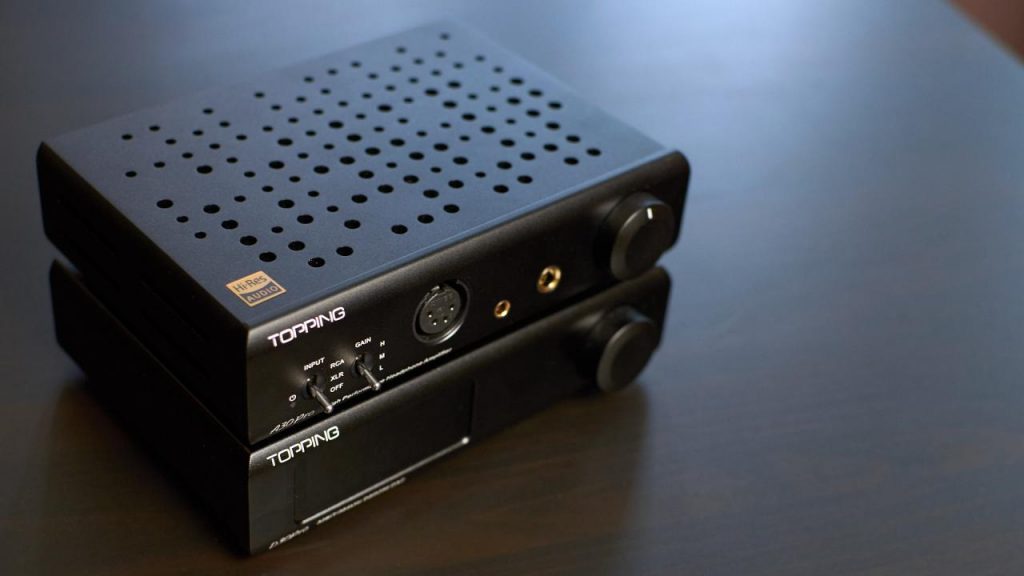
Pairing
Due to the strident and somewhat raw nature of the A30 pro, I found it to pair best with sources that are slightly tame or even sweet sounding. My own Denafrips Ares II DAC proved to be a very good match, adding the much-needed sound lushness to the mix. But given its price which is two times higher than the A30 pro itself, I moved to the next one – Topping D30 pro. Now, this is the DAC that Topping intended you to use with A30 pro, and true enough they do make a very good match. D30 pro is somewhat warm sounding when it comes to the bass and mid-bass region. It’s also a somewhat tame-sounding DAC with a softer approach to edges and transients. All of this clicks very nicely with A30 pro and these two have a very good synergy – something I didn’t always find in previous Topping stacks. They also make a lot of sense price-wise so there you go, a sonically and aesthetically pleasing pair. It’s almost like they’re meant to be together.
Conclusion
If you’re looking for a warmer, smoother, and more refined presentation, you’ll probably have to look elsewhere. That said if the forceful, energetic, and pretty neutral sound is something you appreciate, especially when it’s bundled with a great build and rich connectivity, there’s very little to complain about here. When we actually count in the asking price of 349 USD and the fact it can be found at a discount for as low as 319 (at the moment of writing this review), I’d say Topping A30 pro brings a very high value to the table, or in other words – A30 pro is a great bang for the buck.
| TOPPING A30 PRO – CHARACTERISTICS |
|
Amplifier inputs: 1 xXLR (L+R) / 1 xRCA (L+R) |
